
1 Six high rolling mill
The six-high mill is an important milestone in the history of rolling mill technology. Before the advent of the 6-high mill, which marked a leap forward in rolling technology, the standard configuration of the 4-high mill was one set of support rolls and one set of work rolls. Due to the need to change the work roll according to the pass table and the change of the material to be rolled, the workload is very large.
Dr. Toshiyuki Kajiwara, a famous Japanese expert, drew a strong brush for this. His solution was a six-roll design, which added intermediate rolls that could move between the work roll and the support roll to eliminate unwanted contact zones. This breakthrough method can be adopted in daily production and can produce high-quality strip steel in a simple and intuitive way, which will greatly benefit steel rolling companies.
2 The birth of UCM
Since the advent of the 6-high mill, market expectations have been changing, and the demand for thinner, stiffer and straighter strips has continued to increase. Under this background, universal crown control mill (UCM) came into being. UCM is characterized by excellent strip shape control, which makes it easy to keep the strip shape stable under changing rolling forces. UCM also improves product yield due to reduced edge drop. In the 1980s, its high performance as a new generation of 6-high mills allowed steel companies to expand their product range and produce highly sought-after high-quality materials.

UCM has made a significant contribution to the steel industry, which aspires to improve the quality and efficiency of steel production, establishing itself as a reliable rolling solution for high-quality materials. At the same time, the growing demand for harder and thinner materials in recent years has driven further advances in technology. As a result, Primetals decided to introduce a new rolling mill design to maximize the unique benefits of UCM.
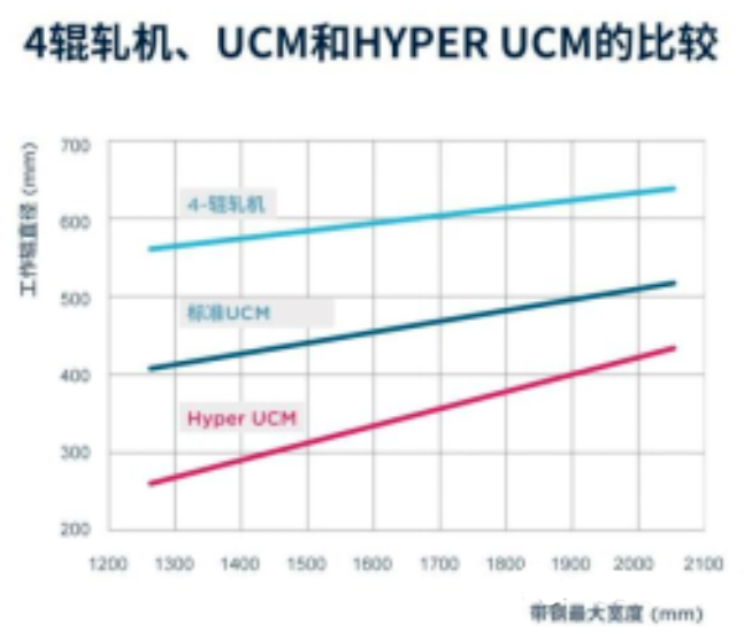
3 Launch of HYPER UCM
Hyper UCM represents the further development of cold rolling technology. It uses a thinner work roll and is equipped with a smaller work roll drive system.
During the development of Hyper UCM, a study was conducted on the optimal combination of roll diameters to achieve the maximum reduction rate. Primetals uses a simulation method to calculate the maximum rolling force that needs to be limited to obtain a good strip shape, as well as the maximum rolling force allowed by the strength of the roll. Through this simulation, we know the most suitable work roll diameter to achieve the maximum reduction rate under different maximum mill widths. This study laid the foundation for determining that the work roller diameter should be reduced by 20-30% from UCM to Hyper UCM.
The discovery of the undesired contact zone on the 4-roll mill and the corresponding solution - intermediate roll channeling - allowed the work roll diameter to be reduced. The figure above summarizes the relationship between the average work roll diameter and mill type and strip width based on data from different steel mills around the world. Overall, the work roll diameter of the standard UCM is reduced by approximately 25% compared to the 4-high mill, while the work roll diameter of the HyperUCM is further reduced by 20-30% compared to the standard UCM.
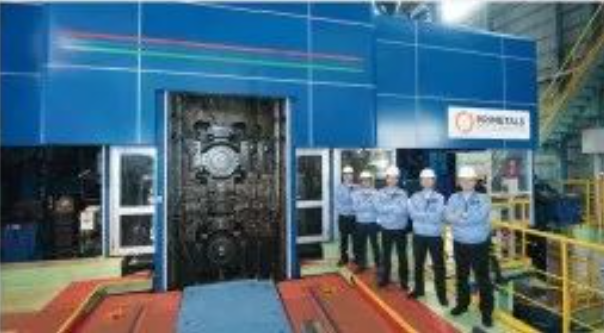
The technical advantages of Hyper UCM bring significant benefits to steel companies. Hyper UCM reduces rolling forces, reduces the number of passes, and retains the excellent strip shape control of standard UCM. It also improves rolling efficiency and enables high-quality production of advanced materials.
New drive shaft design to increase torque. In order to be able to adopt the desired work roll diameter, the technician had to develop a reduced work roll drive system using a smaller drive shaft, because the work roll diameter can be reduced, but a higher strength drive shaft is required to deliver greater torque. Therefore, a technological breakthrough was needed: a new type of drive shaft capable of delivering more torque to a thinner work roll had to be designed.
Primetals has succeeded in achieving this innovation. The new drive shaft design paves the way for Hyper UCM. The material and structure of the new drive shaft have been improved, making its strength significantly higher than that of the traditional type. The new drive shaft, called the Mitsubishi Hitachi (MH) shaft, is capable of delivering about 2.7 times more torque than a conventional universal-jointed (UJ) drive shaft. Since its successful development, MH shafts have proven their worth in cold mills for a number of Primetals customers.
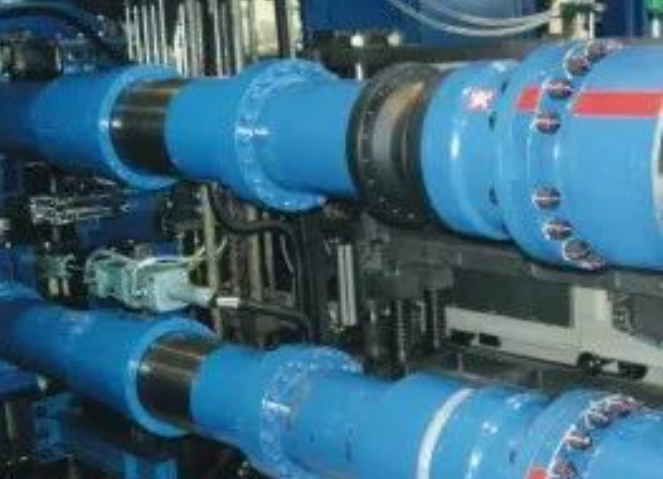
Rolling technology for the future. In recent years, the production of new non-oriented (NGO) steels and harder and thinner advanced high strength steels (AHSS) has increased rapidly. These grades are used in electric and light vehicles, helping to reduce carbon emissions. For enterprises dominated by low carbon steel, the production of higher strength, thinner specifications and lighter weight strips is no longer just an option, but a must. Hyper UCM is capable of producing materials for the space age, making an important contribution to a sustainable future for the steel industry and environmental protection.
In addition, the advanced features of Hyper UCM are suitable for both reversible cold rolling mills (RCM) and tandem cold rolling mills (TCM). For TCM retrofits, Hyper UCM can replace some of the existing TCM racks, thus achieving the goal of large-scale, efficient and high-quality production of advanced steel grades.
4 Typical application scenarios of Hyper UCM
Hyper UCM provides high quality solutions for high grade thin specification high quality electrical steel. With the continuous improvement and promotion of electric vehicles, the demand for electrical steel is growing, and the growth rate of the electrical steel market is expected to reach 7.5% by 2027. Whether oriented or non-oriented steel grades, whether thin or ultra-thin specifications, they have the characteristics of high strength, light weight and excellent performance, which is crucial for the electric vehicles of the future. However, the production of thin gauge, high permeability oriented and unoriented electrical steels is challenging and requires quality assurance while increasing capacity.
Thin specification, high strength, difficult to roll. The silicon content in electrical steel can reach up to 6.5%, of which the silicon content of typical commercial steel is up to 3.2%. An increase in silicon means an increase in electrical resistance. This type of steel is usually rolled into thin and ultra-thin specifications, that is, 0.25 mm and below. Thickness, strength and silicon content are its characteristic indexes. However, due to the increase in hardness and brittleness, all these parameters have an impact on the rollability of electrical steel. Therefore, for steel production enterprises, the rolling of this type of steel has brought greater challenges.
The challenges encountered in cold rolling of these particularly brittle steel grades include work roll deformation, uneven thickness (especially at the edge of the strip, known as edge drop), edge cracking and thermal slip. Faced with these problems, which will cause a decline in production and quality, steel producers must overcome difficulties and achieve extremely high quality standards and yield levels in order to meet the growing demand.
Primetals' solution - Hyper UC-Mill, a six-high universal crown control mill
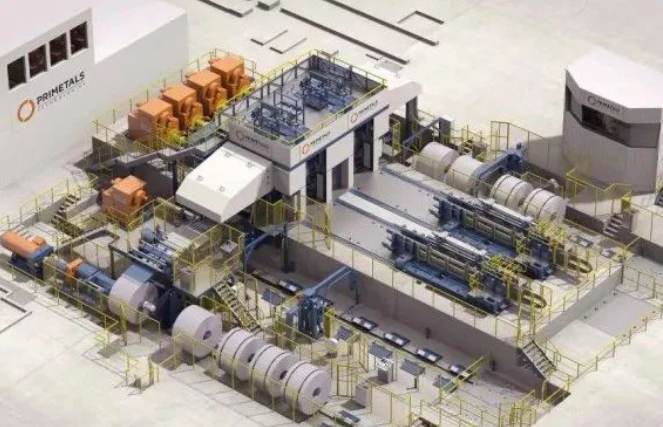
Primetals has developed the Hyper UC-Mill, a 6-roll universal crown control Mill, which reduces the work roll diameter by approximately 20-40% compared to the ordinary UC-Mill, enabling greater reduction. The ratio of the work roller diameter to the maximum width of the strip can reach 20%. This ratio is very suitable for the rolling of high-silicon electrical steel and even advanced high-strength steel (AHSS).
There are more innovations in the scheme. In order to achieve accurate edge drop and straightness control, the hydraulic cylinder of work roll channeling, middle roll channeling, work roll bending and middle roll bending are combined to compensate by "channeling" the work roll to achieve stable rolling force and straightness index channeling roll to keep the reduction amount and shape unchanged, which means to improve the flatness
Minimum amount of oil, best results. In the whole rolling process, it is necessary to use a variety of methods to stabilize the strip at a certain temperature, including strip cooling, work roll cooling, strip speed change, roll pass distribution and induction heating. If the temperature of the strip is too low, edge cracking and strip breaking may occur; If the strip temperature is too high, there may be thermal slip damage or surface defects.
Microlubrication technology. Emulsion lubrication is an effective means to maintain temperature during work roll cooling. To ensure that the amount of emulsion used is minimized, Primetals has developed a micro-lubrication technology that atomizes rolling oil onto the surface of the work roll. It forms an oil film on the surface of the work roll, thereby improving the friction conditions. This oil film is very thin, meaning that the temperature of the strip is not affected. Because the friction is reduced and the oil film has the effect of heat insulation, the strip temperature can be kept stable during the rolling process. The combination of advanced lubrication solutions and temperature control systems increases efficiency, reduces costs and improves consistent product quality.
5 HZ rolling mill - thinner, faster
With the increasing popularity of electric vehicles, the share of electrical steel in the steel market will gradually increase. However, the growth in demand will also place higher demands on quality, performance and thickness specifications. Manufacturers will be challenged to provide high-quality electrical steel with greater speed and accuracy.
The Hyper-UC-Mill improves strip thickness and quality metrics, while the Hyper-UC-Mill design for tandem cold mills means thinner specifications are reached faster. However, while most Hyper-UC-mills are suitable for rolling different types of non-oriented electrical steel, ZR mills present an opportunity for higher hardness materials to achieve thinner specifications.
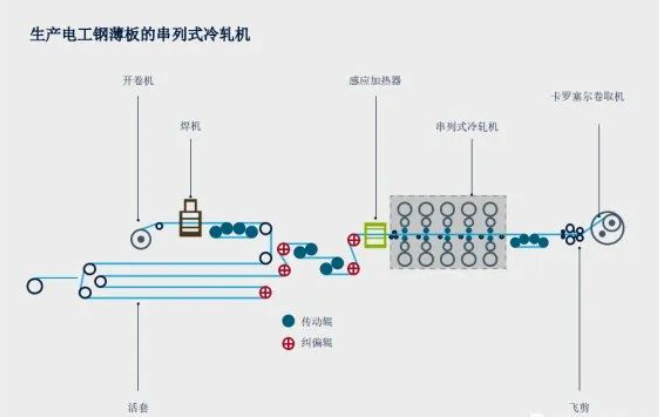
HZ rolling mill
Primetals has developed a ZR mill for split arch, known as the HZ mill. It increases the opening of the roll gap and makes the operation of the belt easy. Its roller diameter configuration is very flexible, and there are improvements in other aspects. With it, Primetals has set new standards for UC mills and ZR mills.
Both the Hyper-UC-Mill and HZ Mill are able to produce oriented and unoriented electrical steels with consistent high quality and high efficiency to meet the growing market demand in the future.
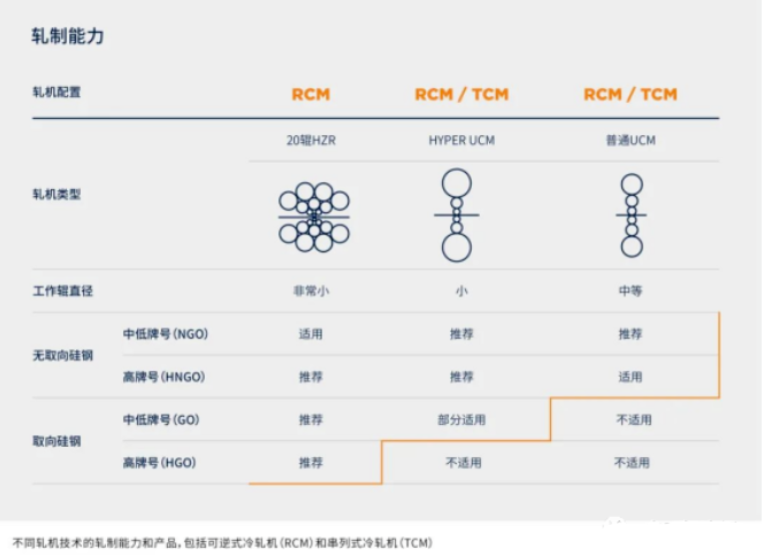
6 Typical Case of Hyper UC-Mill
The latest mill developed by Primetals, Hyper UCM enables high precision plate thickness and profile control in high strength steel (AHSS) rolling. The technology is also suitable for rolling high specification non-oriented silicon steel and thin strip products. The technology is based on an optimized roll diameter combination (work roll, intermediate roll and support roll), with a smaller diameter work roll for maximum reduction, and a work roll drive system for high flatness controllability.
Case 1
Primetals has completed the universal Crown Control Mill (UCM) upgrade project for Masteel.
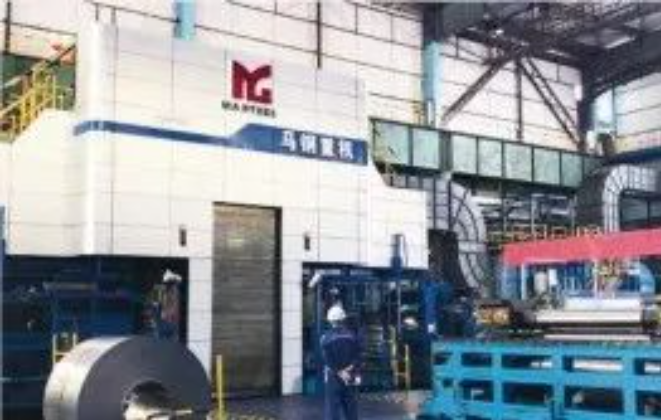
Since 2007, Masteel has been producing medium-grade non-oriented NGO electrical steels on two single-stand reversible cold rolling RCM machines using standard UCM technology. The company's third RCM went into operation in 2010, using the more advanced Hyper UCM solution, capable of producing high-grade electrical steel.
In 2017, Masteel signed a contract with Primetals to upgrade one of its standard UCMs to Hyper UCM. This project has greatly improved the output and performance level of the mill. In order to minimize the downtime, it was decided to reuse the archway of the original standard UCM, as its roll size is almost identical to the Hyper UCM. The only modification required for the arch was the machining of new threaded holes for the new bending roll block.
The Hyper UCM uses a different work roller with a diameter of only 260mm, compared to the previous work roller with a diameter of 370 mm. Although the roller diameter is reduced, the Hyper UCM is still driven by work rollers like the standard UCM. The fine work roll can reduce the rolling force and reduce the rolling pass. A new gearbox, a new drive motor and a new drive shaft were also installed to accommodate the reduction in the work roll diameter and the change in speed. In addition, Primetals has updated roll bending blocks, roll changers, and inlet and outlet stack steel shields, all of which facilitate the use of fine work rolls. With Hyper UCM technology, the upgraded RCM is now able to produce high grade electrical steel such as 35W270, while the standard UCM can basically only produce 35W440.
Case 2
In 2020, Primetals won a contract from Shougang Qian 'an to supply TCM, a six-stand tandem cold mill, to a new plant in Qian 'an, Hebei Province, China.
The TCM will be designed as Hyper UC-mill, a super universal crown control mill. The Hyper-UC-Mill uses small diameter work rolls to reduce the rolling load. This enables the production of harder and thinner materials and improves product quality. All six stands of the Hyper-UC-Mill are equipped with work roll channeling, a first for this mill, in order to precisely control the edge shape of high grade electrical steel. In addition, rolling mill solutions can also save investment and maintenance costs. It enables Shougang Qian 'an to meet the growing demand for electrical steel and AHSS grades for end-use applications such as electric vehicles. The mill will start production at the end of 2022.
The mill uses a small diameter work roll and work roll drive system, which will produce electrical steel, AHSS steel and tinned steel with thicknesses of 0.18-2.5mm x 750-1320mm.

7 Typical Cases of Hyper UC-Mill
1. China Masteel
Project type: reversible cold rolling mill (No. 3 mill), production time: 2013
Steel type: silicon steel
Thickness: 0.35-0.65mm
2. East Asian customers
Project type: Tandem cold mill, one of the 5 racks converted into Hyper UCM
Production time: 2017
Steel type: AHSS
3. China Masteel
Project Type: Retrofit of reversible cold rolling mill (1# mill)
Production time: 2018
Steel type: silicon steel
Thickness: 0.35-0.65mm
4. China Masteel
Project type: Tandem cold mill, one of 4 racks converted into Hyper UCM
Production time: 2020
Steel type: HSS, silicon steel
5. Baosteel, China
Project type: Tandem cold rolling mill, adding 1 Hyper UCM rack to the existing 5 racks
Production time: 2021
Steel type: AHSS
6. Vietnamese customers
Project type: reversible cold rolling mill
Production time: 2021
Steel type: mild steel
Thickness: 0.10-1.6mm